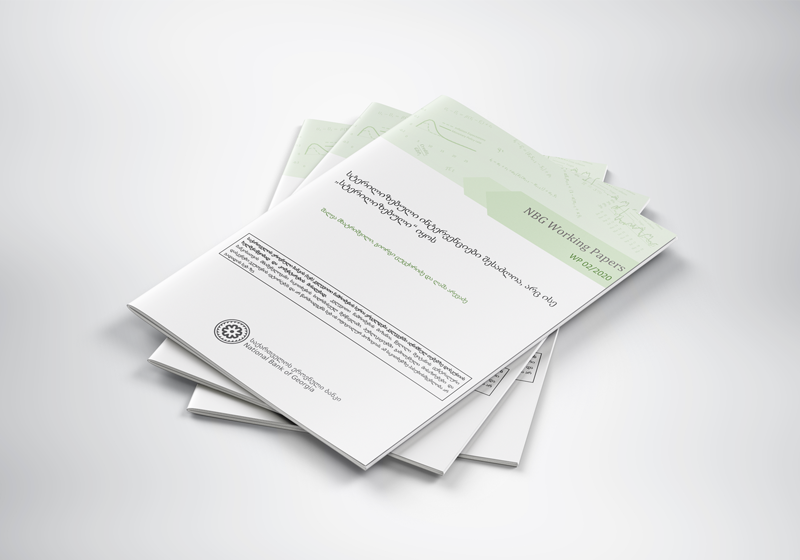
What could be the effect of sterilized FX interventions on domestic currency interest rates?
A new paper on sterilized FX interventions in the Working Paper Series of the National Bank of Georgia
 The National Bank of Georgia publishes
the next paper in its NBG Working Paper Series. The working papers aim to present
research on topics relevant to central banks and economics profession. The papers
are circulated to elicit comments and encourage debate on ongoing research. The
Working Paper Series are coordinated by the Macroeconomic Research Division and
will focus on topics relevant for central bank policy, including macroeconomic
modeling, monetary and exchange rate policies, financial stability, etc.
The National Bank of Georgia publishes
the next paper in its NBG Working Paper Series. The working papers aim to present
research on topics relevant to central banks and economics profession. The papers
are circulated to elicit comments and encourage debate on ongoing research. The
Working Paper Series are coordinated by the Macroeconomic Research Division and
will focus on topics relevant for central bank policy, including macroeconomic
modeling, monetary and exchange rate policies, financial stability, etc.
The next working paper in the series, titled "Sterilized FX interventions may not be so sterilized", was prepared by the staff of Macroeconomics Research Division at the NBG. As the paper discusses, it is widely believed that sterilized interventions do not affect domestic currency interest rates and the reason is the word "sterilized". Yet this paper shows that when collateral base for central bank operations isn't huge, sterilized interventions may still affect interest rates, loan extension and, hence, real economy (beyond the effects of altered exchange rate). The mechanism is simple: when banks make decisions about loan extension and, hence, deposit (money) creation, they take liquidity risk into account. When collateral base for central bank operations isn't big enough, even if collateral constraint isn't currently binding, banks may still fear (massive) withdrawals that, in principle, can get them to the constraint. This fear is reduced when they get permanent liquidity (from the central bank that buys FX) as opposed to getting the same amount of liquidity by borrowing from the central bank (that requires collateral). Reduction in this fear will then result in loan interest rate reduction and/or easier terms for loans. We demonstrate the importance of this mechanism through three different approaches: accounting, theoretical and empirical. The quantitative importance of this channel depends on the amount of unused collateral: the more the collateral the lower the liquidity risk and associated interest-rate-effects of FX interventions. In addition, the framework provides other interesting insights about the relationship between liquidity risk and reserve requirements.
The working papers can be accessed at the following page